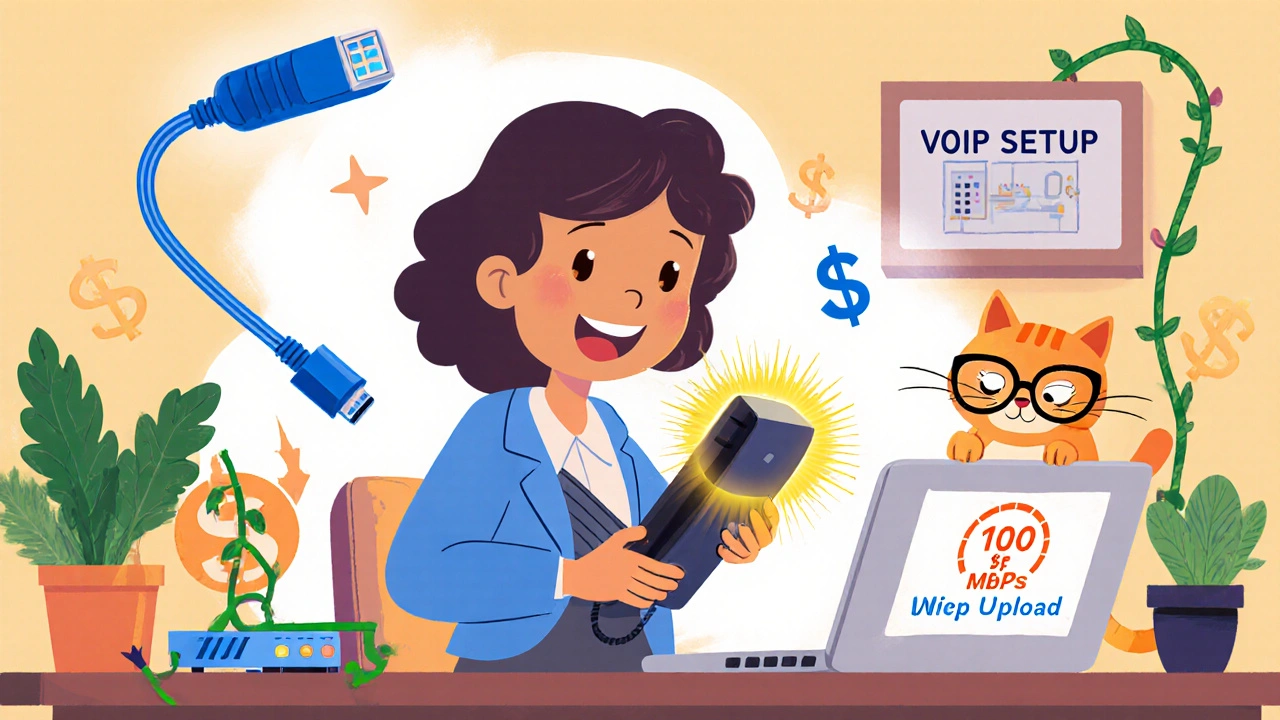VoIP vs Traditional Phone: Real Differences in Cost, Quality, and Control
When you compare VoIP, a phone system that sends voice over the internet using SIP protocols. Also known as IP telephony, it lets you make calls through your broadband connection instead of copper wires. with a traditional phone system, a legacy network relying on physical phone lines and circuit-switched technology. Also known as PSTN, it’s the same system most homes used for decades., you’re not just choosing between two ways to talk—you’re choosing between a tool and a service. VoIP runs on your existing network. Traditional phone requires separate wiring, monthly line fees, and hardware you can’t upgrade without calling the provider. Most small businesses don’t realize they’re paying for outdated infrastructure when they could be using the same internet connection for calls, email, and video meetings—all at a fraction of the cost.
Let’s say you run a team of 10. With a traditional system, you’d need 10 physical lines, each costing $30–$50 a month just to stay active. Add in monthly equipment leases, long-distance fees, and maintenance calls, and you’re looking at $600+ a month. With VoIP? You pay one flat fee—often under $30 per user—with unlimited calling across the U.S. and Canada. No extra charges for moving offices, adding phones, or letting someone work from home. And if your internet goes down? You can forward calls to your phone, email, or even a colleague’s device. Traditional systems just go silent. VoIP also gives you features you can’t even get with landlines: call recording, automated attendants, CRM pop-ups, and analytics that show you which calls convert. These aren’t extras—they’re the reason companies cut their phone bills by 50% or more in the first year.
Some people worry about call quality. But if your network is set up right—with proper QoS, VLANs, and DSCP markings—VoIP calls sound clearer than analog lines. No static. No dropped words. No waiting for the signal to catch up. The real issue isn’t VoIP. It’s bad internet. If you’re using a shared connection with no traffic prioritization, you’ll get choppy audio. That’s why so many posts here cover SIP calling, the protocol that makes VoIP work by managing call setup, routing, and teardown. Also known as Session Initiation Protocol, it’s the engine behind every modern business phone system., business phone systems, integrated platforms that combine voice, messaging, and collaboration tools over IP networks. Also known as cloud PBX, they replace bulky on-site boxes with software you manage from a browser., and how to fix audio problems before they ruin customer calls. You’ll find real fixes here—not theory. You’ll see how companies use DSCP markings to make sure voice gets priority over downloads. You’ll learn why some VoIP providers lock you into hardware while others let you use any phone. You’ll even see how to avoid legal traps with call recording laws.
There’s no magic switch that turns a landline into VoIP. But there’s a clear path: evaluate your current costs, test your internet, pick a provider that fits your team size, and start migrating. The sooner you do, the sooner you stop paying for a phone system that’s stuck in the 1990s.
